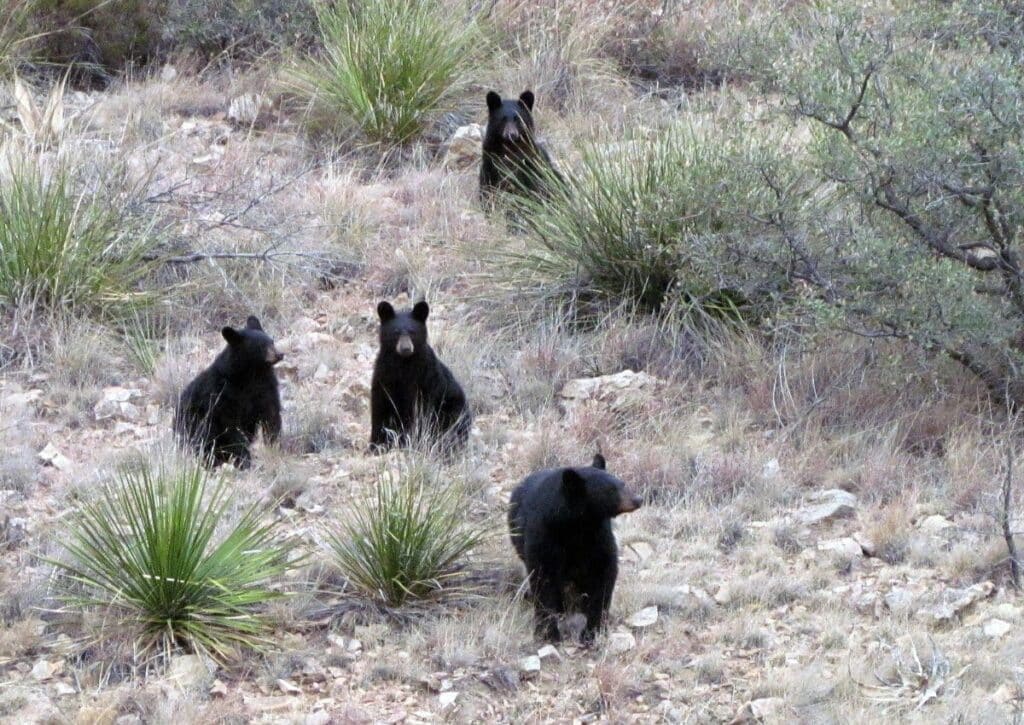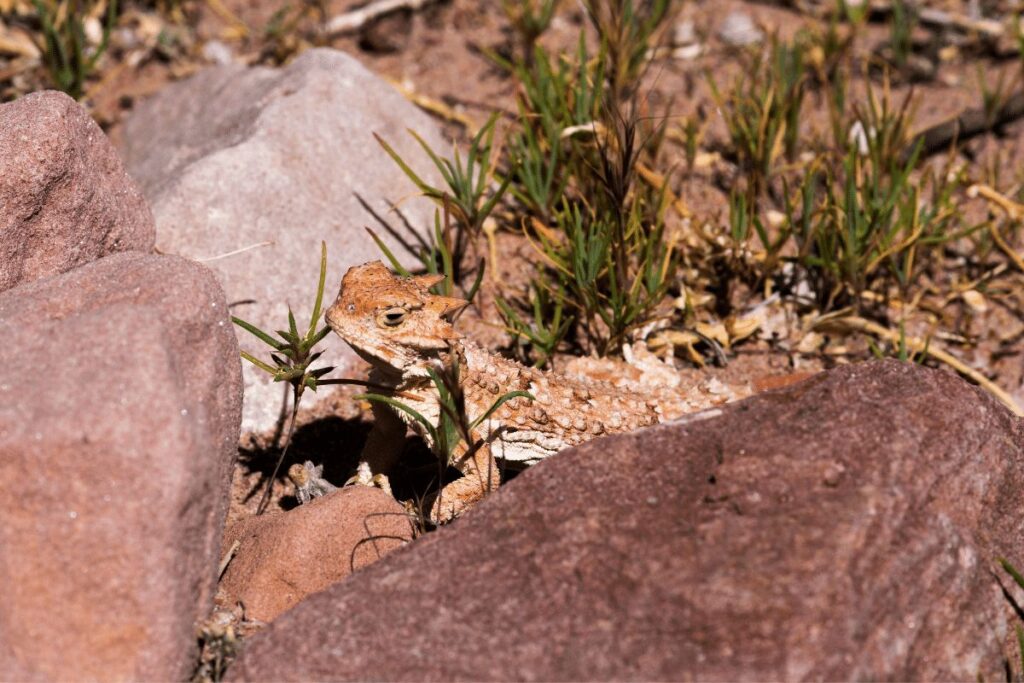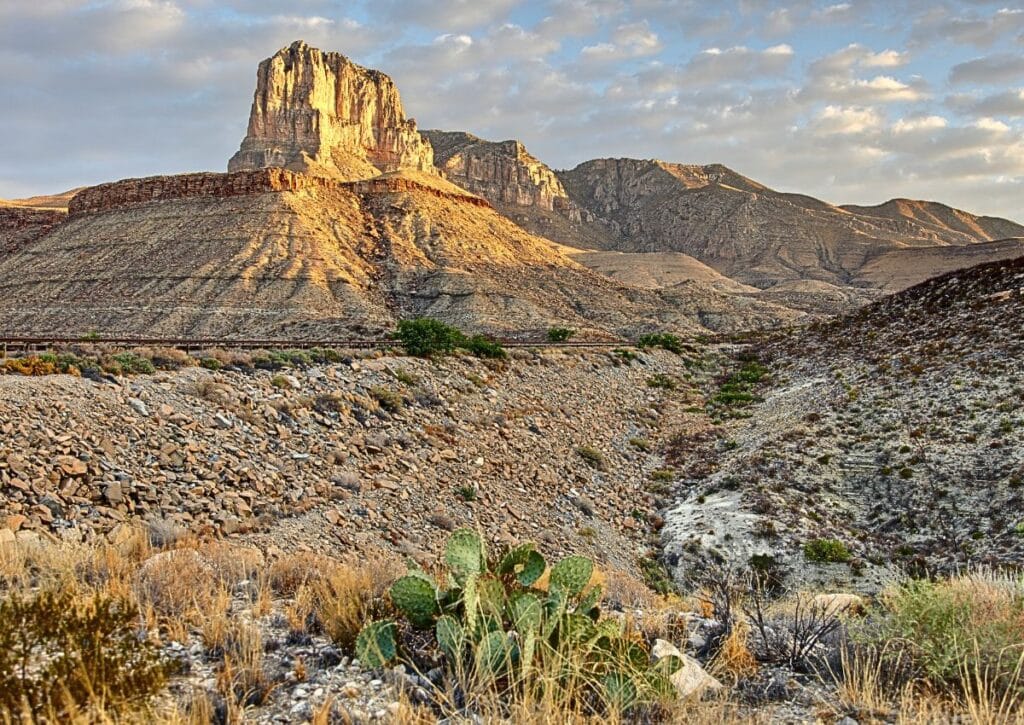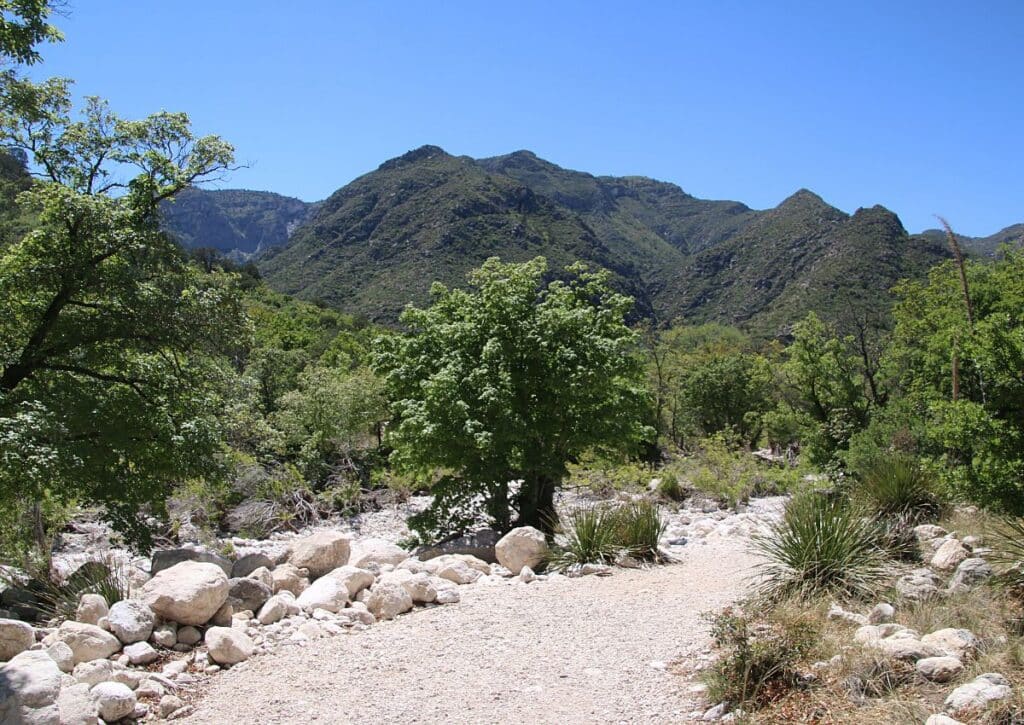Explore black bears in Guadalupe Mountains National Park. Dive into their habitats, trails where they're spotted, and safety tips for an enriched visit.
Guadalupe Mountains National Park, a jewel in the heart of Texas, boasts more than just its breathtaking landscapes and historical trails. Among its diverse inhabitants, the park is home to a fascinating population of black bears. As of recent estimates, there are approximately 30-40 black bears residing within the park’s boundaries.
As a visitor, understanding this bear presence is not only essential for safety but also enriches the overall experience. As you plan your adventure to this stunning locale, this guide will provide insights into the bear population, their habitats, and how you can responsibly and safely enjoy their majestic presence.
Dive in and get acquainted with the bears of Guadalupe Mountains National Park.
Bears in Guadalupe Mountains National Park
The predominant species of bear in Guadalupe Mountains National Park is the black bear. Black bears, recognized by their medium size and non-retractable claws, are adept climbers and swimmers, skills that serve them well in the park’s varied topography.
While they might be named “black” bears, their fur can range from jet black to brown, cinnamon, and even blonde. Typically, they have a straight profile from forehead to snout and might possess a light patch or white marking on their chest, though this is not always the case.
Their adaptation to the park’s topography is noteworthy. Guadalupe Mountains National Park’s diverse landscapes, from vast desert lowlands to intricate limestone canyons, present a range of challenges and opportunities for its inhabitants. Black bears, being versatile creatures, traverse these terrains with agility and efficiency.
They utilize the park’s rocky outcrops and dense woodlands for shelter, often seeking out caves or overhangs for dens. The elevated terrains, full of nooks and crannies, provide them with vantage points to spot potential threats and prey.
When it comes to diet, black bears are omnivorous and exhibit a varied palate. In Guadalupe Mountains National Park, they predominantly feed on plant materials like berries, acorns, and nuts. They also consume insects, particularly ants and beetles, and can occasionally hunt small mammals if the opportunity arises.
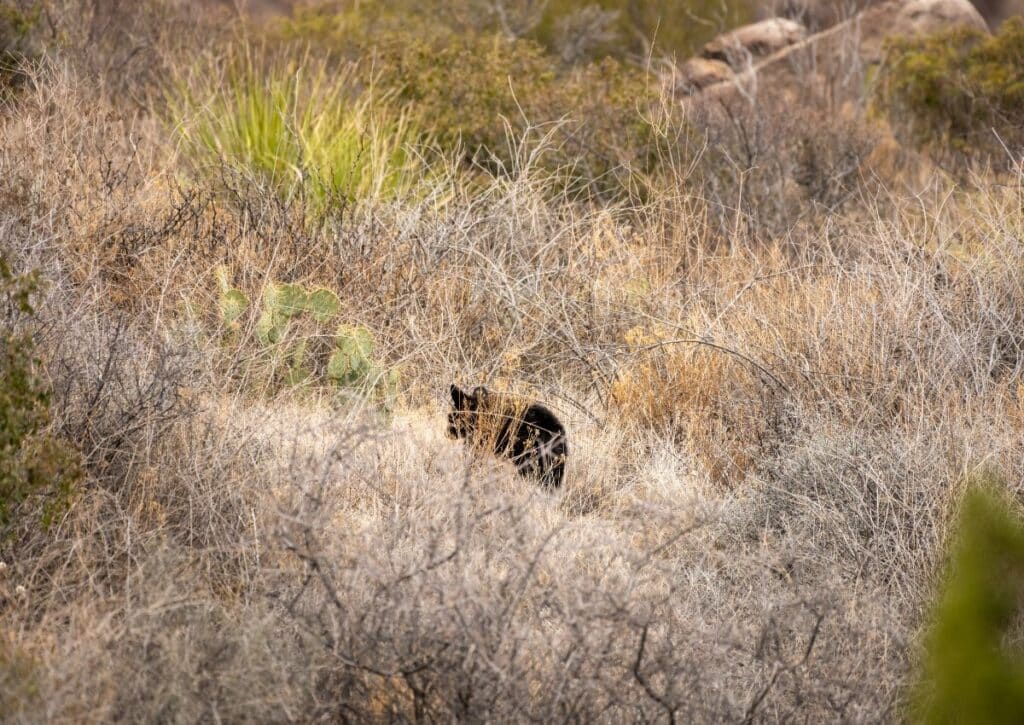
However, they are opportunistic feeders, which means that if they come across carrion, they won’t hesitate to consume it. This varied diet plays a pivotal role in their survival, especially in areas where food sources can be seasonal.
In terms of numbers, the black bear population within Guadalupe Mountains National Park is estimated to be between 30-40 individuals. It’s an impressive count, especially considering the bears’ history in the region. These bears were once on the brink of local extinction but have shown resilience and adaptability.
Their resurgence is a clear indication of successful conservation initiatives, coupled with the park’s rich biodiversity that supports their sustenance.
The presence of black bears in Guadalupe Mountains National Park enriches its ecosystem. For visitors and wildlife enthusiasts, understanding these bears – from their appearance to their habits – is vital to appreciate the park’s vibrant wildlife tapestry fully.
Where to Spot Them in Guadalupe Mountains National Park
Spotting a black bear in the wild is an exhilarating experience, and Guadalupe Mountains National Park offers such opportunities. To ensure a safe and respectful observation, it’s essential to know the bear hotspots within the park.
A. Bear-friendly Zones within GMNP
Guadalupe Mountains National Park spans over 86,000 acres, boasting a range of environments. While the entire park isn’t frequented by its black bear residents, certain zones prove more attractive.
- Water Sources: Black bears often visit places with consistent water sources, especially during drier months. In Guadalupe Mountains National Park, springs like Manzanita Spring, Smith Spring, and Pine Spring serve as such hydration points, drawing bears for a drink or to feast on the lush vegetation around.
- Dense Vegetation: Areas abundant in vegetation serve a dual purpose for bears: food and cover. The park’s regions like Dog Canyon and Williams Ranch are characterized by dense foliage, offering a mix of berries, nuts, and other plant foods that bears frequently consume.
- Rocky Outcrops and Caves: Guadalupe Mountains National Park’s distinct limestone topography provides bears with shelter and strategic vantage points. Locations such as Devil’s Hall and the rocky terrains around McKittrick Canyon are ideal for bears seeking rest, shelter from the sun, or using the nooks for potential dens.
B. Top Locales for Bear Enthusiasts
Within the park, some areas stand out as particularly favorable for bear sightings based on data from park ranger observations, visitor reports, and wildlife tracking initiatives.
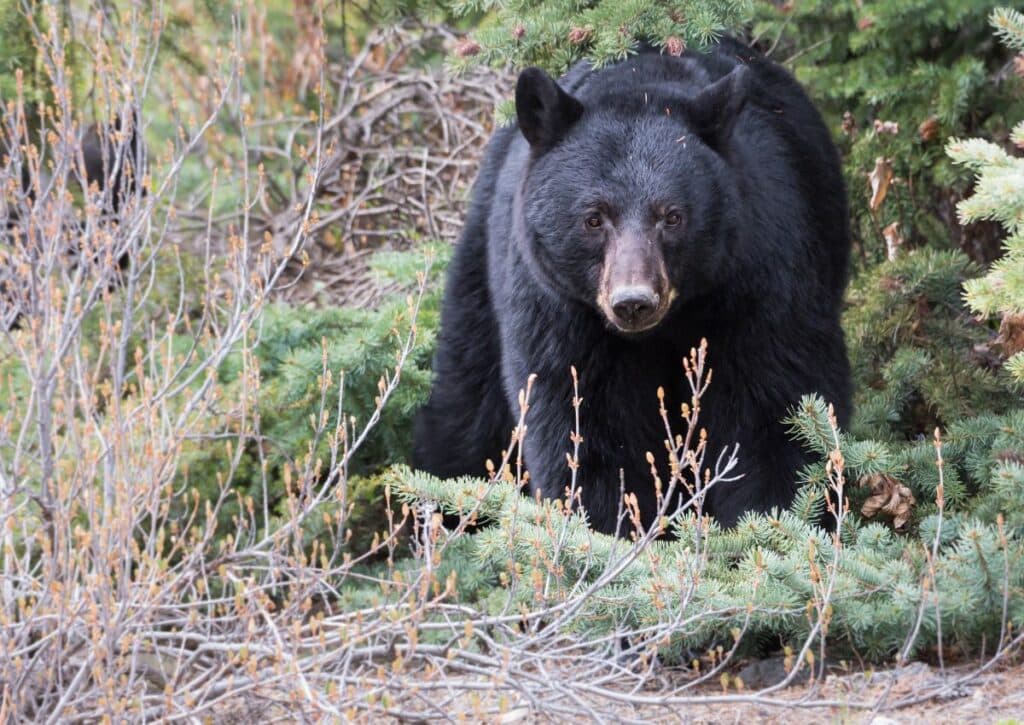
- McKittrick Canyon: This canyon is not only renowned for its breathtaking fall colors but also as a bear hotspot. The dense vegetation, coupled with the presence of water sources like the McKittrick Creek, makes it a bear magnet. While hiking the trails, visitors have reported numerous sightings, especially during early morning or late afternoon when bears are most active.
- Pine Springs: As one of the primary water sources in the park, Pine Springs is a hub for wildlife activity. The nearby campsites and picnic areas also mean that it’s imperative for visitors to store food correctly and maintain a safe distance from any wildlife, including bears. The trailheads that begin from Pine Springs area, such as the Guadalupe Peak Trail, offer potential bear sighting opportunities.
- Frijole Ranch: Located on the park’s eastern side, Frijole Ranch boasts historical structures, springs, and dense vegetation. This combination provides an attractive environment for black bears. The Frijole Ranch Trail, leading to Manzanita Spring and Smith Spring, has been a notable path for bear encounters. It’s essential to note that while the area is favorable for sightings, it’s also crucial to be bear-aware, ensuring that all food is stored securely and that one maintains a respectful distance from the wildlife.
While Guadalupe Mountains National Park provides ample opportunities for bear sightings, safety and respect for wildlife should always be the priority. Using data-driven insights about bear hotspots can enhance the experience for both the visitor and the bear, ensuring memorable encounters that don’t disturb the park’s delicate ecological balance.
Trails on Which We Have Seen Bears in Guadalupe Mountains National Park
In the vast landscapes of the Guadalupe Mountains National Park, bears roam freely, adding depth to the park’s vibrant ecosystem.
For the enthusiastic traveler, understanding which trails offer the best chance of spotting these majestic creatures, along with when and how to navigate them, can make all the difference in the world.
The park boasts numerous trails, but specific pathways offer higher chances of bear encounters due to the combination of food sources, water availability, and the terrain preferred by bears. Here’s a closer look at three such trails:
Devil’s Hall Trail
Trail Length: Approximately 3.8 miles round trip.
Description: A moderately challenging trail, Devil’s Hall is known for its natural stairway and the Hall, a narrow passage flanked by towering rocks. Alongside its scenic beauty, the path’s rocky outcrops and dense vegetation pockets make it favorable for bear sightings. As you hike, keep an eye out near the water sources and dense underbrush areas which bears may frequent.
Guadalupe Peak Trail
Trail Length: Around 8.4 miles round trip.
Description: As the highest point in Texas, this trail offers a challenging climb with the reward of panoramic views. While the ascent is rigorous, it passes through varied terrains that bears inhabit. From the wooded areas to the base’s water sources, there are multiple points where bear sightings have been reported, especially during the early mornings or late afternoons.
Smith Spring Loop Trail
Trail Length: Roughly 2.3 miles round trip.
Description: This shorter loop leads hikers through a diverse range of environments from desert to lush oasis, including the Manzanita and Smith Springs. The presence of water and dense vegetation means that bears are often drawn to the area, making it a hotspot for potential encounters.
Prime Bear-Watching Hours
When it comes to wildlife observation, timing can make a considerable difference. Bears are crepuscular, which means their most active hours are during the early mornings and late afternoons to early evenings. These hours coincide with cooler temperatures and reduced human activity, allowing bears to forage, hunt, and move with relative ease.
If planning a hike with the intention of spotting bears, it’s recommended to start early in the morning or schedule an evening trek, ensuring you return before darkness fully sets.
Essential Gear and Bear-Aware Hiking Tips
Embarking on a trail with the hopes of encountering bears requires preparation not just for the potential sightings but for safety.
Essential Gear:
Bear Spray: While black bear attacks are rare, carrying bear spray and knowing how to use it is essential for safety.
Binoculars: Enhance your bear-watching experience without getting too close.
Noise Makers: A bell or whistle can alert bears of your presence, preventing sudden surprises.
Secure Containers: Store food and scented items in bear-proof containers.
Bear-Aware Hiking Tips:
Stay Alert: Be aware of your surroundings. Look out for bear signs like tracks, scat, or markings on trees.
Hike in Groups: Bears are less likely to approach larger groups.
Make Noise: Talk or sing as you hike, especially in dense vegetation or near the sound of running water where your approach might be masked.
Keep a Safe Distance: If you spot a bear, maintain a minimum of 100 yards distance. If a bear approaches, speak in a firm voice and slowly back away without turning your back.
Avoid Feeding Bears: Not only is it dangerous, but it also encourages bears to associate humans with food, leading to potential conflicts in the future.
Guadalupe Mountains National Park offers a unique opportunity to witness black bears in their natural habitat. By choosing the right trails, being mindful of the time, and packing smart, you can ensure your bear-watching experience is both thrilling and safe.
As always, respect for the wildlife and their habitat should be paramount, ensuring these magnificent creatures continue to thrive for generations to come.
Final Thoughts
Guadalupe Mountains National Park is a treasure trove for wildlife enthusiasts, offering a unique blend of breathtaking landscapes and the thrilling possibility of black bear encounters.
While the park spans vast terrains, areas like Devil’s Hall Trail, Guadalupe Peak Trail, and Smith Spring Loop Trail emerge as prime locales for those eager to catch a glimpse of these majestic creatures in their natural habitat.
But bear-watching is as much about patience and respect as it is about adventure. Timing your hikes during the early mornings or late afternoons, packing essential gear like bear spray and binoculars, and following bear-aware hiking tips are pivotal in ensuring a safe and enriching experience.
Encounters with black bears in the wild are both exhilarating and humbling, serving as a poignant reminder of the delicate balance of nature and our role in preserving it.
As you venture out in Guadalupe Mountains National Park, let the allure of the wild guide you, but always with an awareness of the responsibility we bear towards the incredible wildlife that calls this park home. Safe travels and happy bear-watching!

